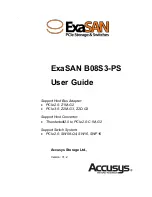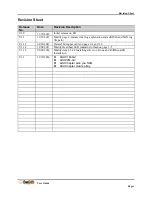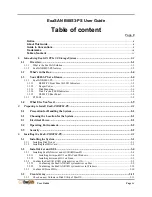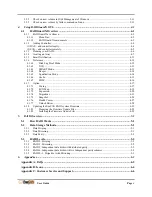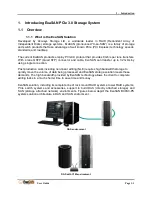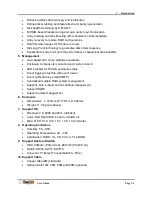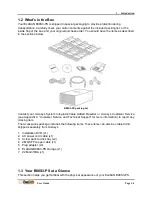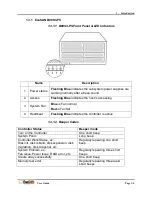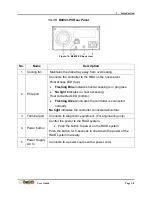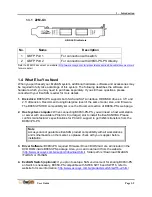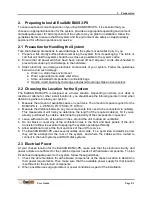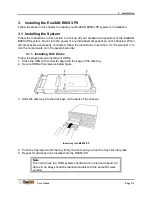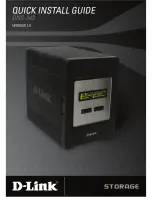
1. Introduction
User Guide
Page 1-3
Online bad block data recovery and reallocation
Online disk scrubbing and data refresh and parity regeneration
Disk health monitoring by S.M.A.R.T.
NVRAM-based transaction log and auto parity resynchronization
Array roaming and disk traveling with redundant on-disk metadata
Array recovery to restore RAID configurations
Dual firmware images for firmware recovery
Disk Lag Proof technology to guarantee disk timely response
Equalization mode to smooth the performance of sequential data transfers
5. Management
Java-based GUI, cross-platform executable
Enclosure components monitoring and control via GUI
LED indicator for RAID & enclosure status
Event logging to text file with event viewer
Event notification by email (SMTP)
Centralized multiple RAID system management
Supports both in-band and out-of-band management
Support SNMP
Support remote management
6. Enclosure
Dimensions: L: 374mm, W:175mm, H:394mm
Weight: 11.5 Kg (w/o drives)
7. Support OS
Windows 7, 8, 2008 and 2012 (32/64bit)
Linux: Red Hat, SUSE, Fedora, CentOS etc.
MAC: OS X 10.5, 10.6, 10.7, 10.8, 10.9 and later
8. Operating Conditions
Humidity: 5% - 85%
Operating Temperature: 0C
– 40C
Certification: RoHS, UL, CE, FCC, C-Tick, BSMI
9. Support Host and Switch
HBA: Z2M-G3 (PCIe3.0 x8), Z2D-G3 (PCIe3.0 x8)
Switch: SW08, SW16, SWF16
Convertor: C1M-G2 (Thunderbolt2.0 to PCIe)
10. Support Cable
Copper cable:2M (standard)
Optical cable:10M, 30M, 50M and100M (optional)
Summary of Contents for ExaSAN
Page 7: ...1 Introduction User Guide 1 Introducing ExaSAN PCIe 2 0 Storage System...
Page 18: ...2 Preparation User Guide 2 Preparing to Install ExaSAN B08S3 PS...
Page 21: ...3 Installation User Guide 3 Installing the ExaSAN B08S3 PS...
Page 33: ...4 How to Use User Guide 4 Using RAIDGuardX...
Page 63: ...5 RAID User Guide 5 RAID Overview...

